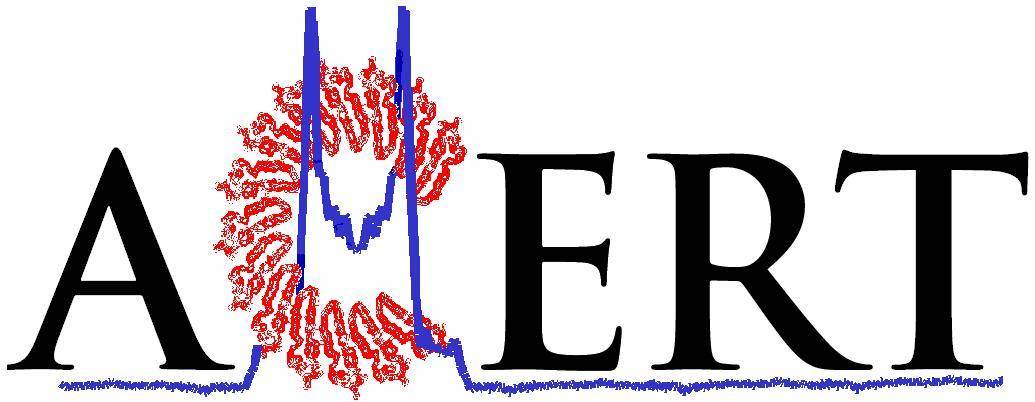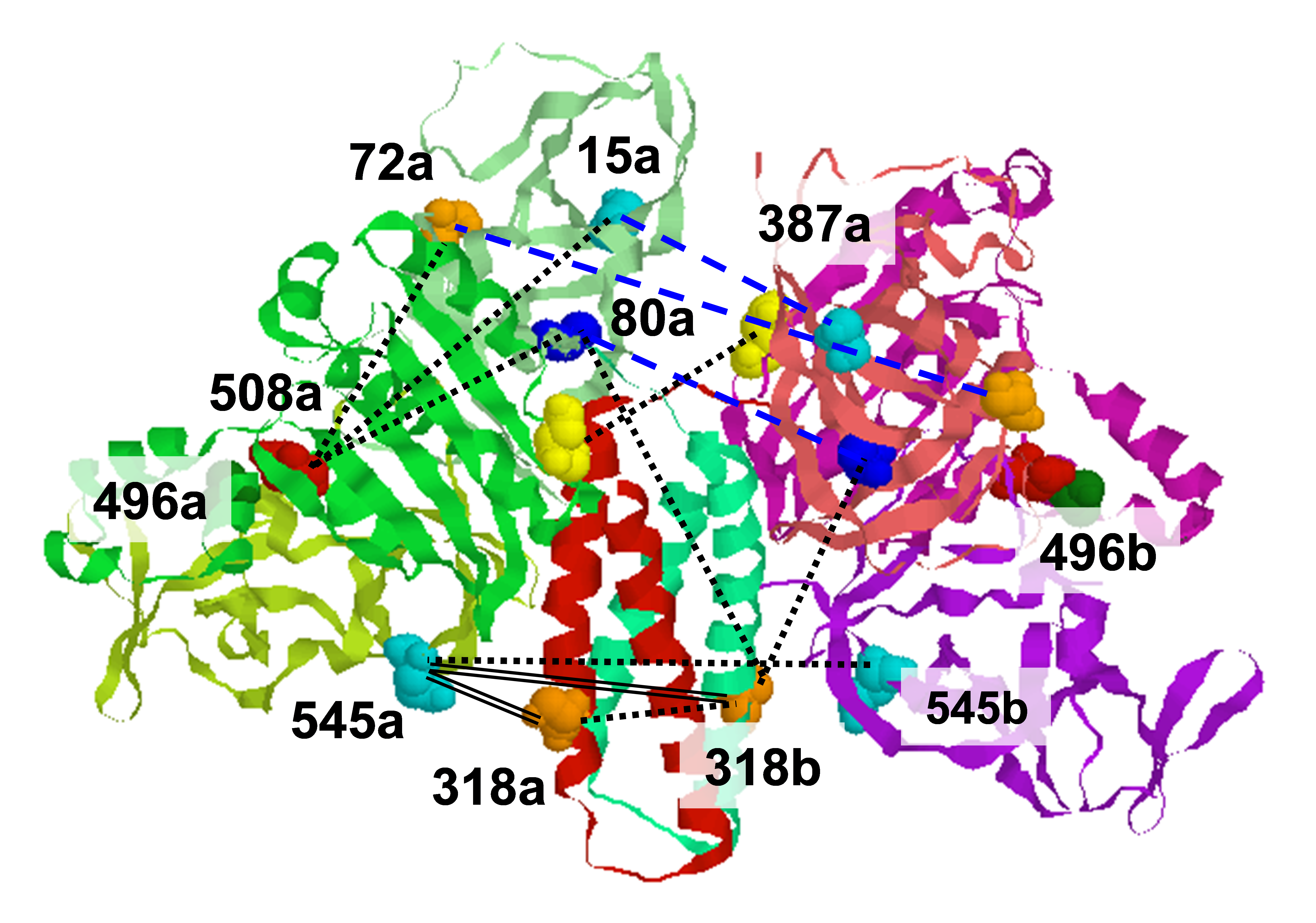.svg) National Institute of General Medical Sciences |
 |
 |
National Biomedical Resource for |
| ACERT's Service and Collaborative Projects | ||
Flavin-binding proteins widely occur across all kingdoms of life. Beyond their crucial role in redox catalysis, flavin-binding proteins also serve as signal receptors for redox potential, partial oxygen pressure, and blue light. Light-oxygen-voltage (LOV) receptors sense blue light through the photochemical generation of a covalent adduct between a flavin-nucleotide chromophore and a strictly conserved cysteine residue. We showed by Pulse-Dipolar ESR in conjunction with photo-chemistry that, after cysteine removal, the circadian-clock LOV-protein Vivid still undergoes light-induced dimerization and signaling because of flavin photoreduction to the neutral semiquinone (NSQ). Similarly, photoreduction of the engineered LOV histidine kinase YF1 to the NSQ modulates activity and downstream effects on gene expression. Signal transduction in both proteins hence hinges on flavin protonation, which is common to both the cysteinyl adduct and the NSQ. This general mechanism is also conserved by natural cysteine-less, LOV-like regulators that respond to chemical or photoreduction of their flavin cofactors. As LOV proteins can react to light even when devoid of the adduct-forming cysteine, modern LOV photoreceptors may have arisen from ancestral redox-active flavoproteins. The ability to tune LOV reactivity through photoreduction may have important implications for LOV mechanism and optogenetic applications. The key PDS-based part of this study was very challenging due to low protein concentrations and highly disadvantageous relaxation properties of endogenous flavin radicals in the Vivid protein. However, the high sensitivity of the pulse ESR spectrometers at ACERT and careful optimization made this type of study feasible. Funding: P41GM105321 (to JHF), R01GM079679 (to BRC), T32GM08267 (to EFY); Deutsche Forschungsgemeinschaft SPP1601 BI 464/10 (to RB), FOR1279 MO 2192/3-1 (to AM); Sofja-Kovalevskaya Award, Alexander-von-Humboldt Foundation (to AM). Publication: E.F. Yee, R.P. Diensthuber, A.T. Vaidya, P.P. Borbat, C. Engelhard, J.H. Freed, R. Bittl, A. Möglich, and B.R. Crane. Nature Commun. 6, 10079 (2015); (PMC4682037). |
||
|
||
|
E.F. Yee (Department of Chemistry and Chemical Biology, Baker Laboratory, Cornell University, Ithaca) R.P. Diensthuber (Biophysikalische Chemie, Institut für Biologie, Humboldt-Universität zu Berlin, Germany) A.T. Vaidya (Department of Chemistry and Chemical Biology, Baker Laboratory, Cornell University, Ithaca) P.P. Borbat (Department of Chemistry and Chemical Biology, Cornell University, Ithaca, NY; ACERT) C. Engelhard (Fachbereich Physik, Institut für Experimentalphysik, Freie Universität Berlin, Germany) J.H. Freed (Department of Chemistry and Chemical Biology, Cornell University, Ithaca, NY; ACERT) R. Bittl () A. Möglich (Biophysikalische Chemie, Institut für Biologie, Humboldt-Universität zu Berlin, Germany; Fachbereich Physik, Institut für Experimentalphysik, Freie Universität Berlin, Germany) and B.R. Crane (Department of Chemistry and Chemical Biology, Baker Laboratory, Cornell University, Ithaca) |
||
|
|
About ACERT Contact Us |
Research |
Outreach |
ACERT is supported by grant 1R24GM146107 from the National Institute of General Medical Sciences (NIGMS), part of the National Institutes of Health. |
|||||
| ||||||||